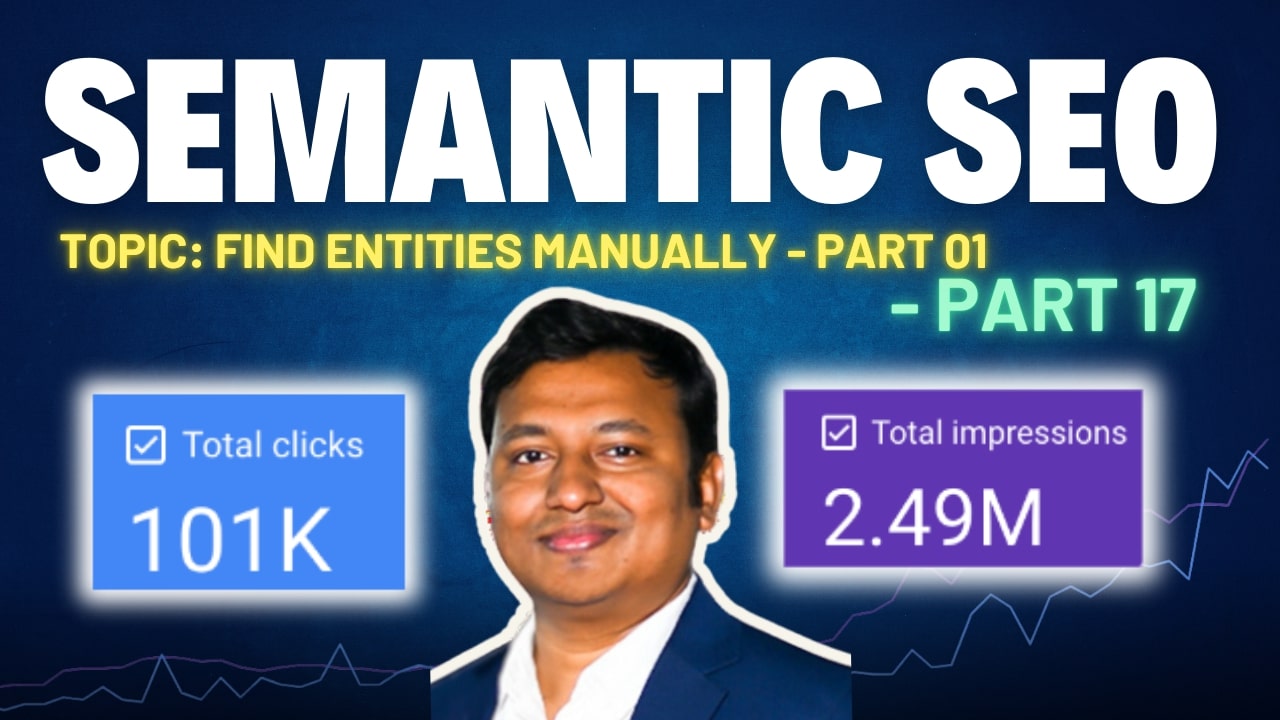What is Manual Entity Extraction?
Manual entity extraction is the process of identifying semantically relevant entities (people, places, products, services, organizations, tools, events, and abstract ideas) by contextual observation and search engine feature mining — rather than relying on automated NLP tools.
Goal: Build a topical map rooted in first-degree and second-degree entities that improves content’s depth, context, and semantic relevance.
Why It Matters in Semantic SEO
- Entities provide semantic signals that go beyond keywords.
- Helps map intent clusters and contextual relationships.
- Reduces ambiguity and improves machine readability.
- Feeds search engines meaning, not just terms.
Foundational Entity Categories
| Category | Examples |
|---|---|
| Person | Elon Musk, plumber, technician |
| Place | New York City, bathroom, kitchen |
| Thing | Tesla, wrench, pipe |
| Event | Plumbing Emergency, Flooding |
| Idea | Maintenance, Repair, Hygiene |
| Organization | Roto-Rooter, Home Depot |
Step-by-Step: Manual Entity Mining Techniques
1. Google Image Segmentation
- Search: “Plumber” or “Plumbing Services”
- Inspect: The suggested filters above image results:
- Tools, Repair, Emergency, Residential, Commercial, Uniform, Sink
- Extract: Semantic variants and closely related concepts.

Avoid irrelevant or decorative terms: “vector,” “logo,” “transparent,” “cartoon.”

2. Wikipedia Hyperlink Mining
Search: Keyword in Wikipedia (e.g., “Plumber”)
Step 1: Extract first-degree entities (directly hyperlinked terms in intro/infobox)

Step 2: Navigate to hyperlinks → extract second-degree entities

Example
- 1st Degree Entities:
- From “Plumber” Wikipedia Page:
- tradeperson, sewage, water, drainage, plumbing
- From “Plumber” Wikipedia Page:
- 2nd Degree Entities:
- From “Drainage” Wikipedia Page:
- Sub-surface water, waterlogging, agriculture, soils
- From “Drainage” Wikipedia Page:
These hyperlinks represent contextual vectors (will discussed later in broad). Search engines interpret them as entity relations (subject–predicate–object also called triples).
ALSO READ …
- How to extract entities using Google NLP tool
- How to extract entities from Textrazor (Free Tool)
- What is entity recognition in semantic
- What is entity-based content
- What is structured data
3. Entity Expansion via Search Variation
- Change seed keyword: “Emergency plumber,” “Drain cleaning,” “Toilet repair”
- Observe SERP enhancements:
- Featured snippets
- “People Also Ask”
- Related Searches
- Knowledge Panels
Each variation surfaces unique sets of latent entities.

4. Manual Curation & Filtering
- Compile all found terms into a Google Sheet
- Remove:
- Duplicates
- Decorative/UI labels (e.g., “outline,” “transparent”)
- Brand names (unless contextually relevant)
| Term | Entity Type | Keep? (Y/N) |
|---|---|---|
| Wrench | Thing | Y |
| Vector | Design Term | N |
| Emergency Repair | Event | Y |
| Mario | Brand | N |
Use Case: Building a Topical Map for “Plumber”
| Entity | Attribute | Value/Example |
|---|---|---|
| Plumber | Services | Drain Cleaning, Toilet Repair |
| Plumbing Tool | Type | Wrench, Plunger |
| Plumbing Emergency | Response Time | 24 Hours |
| Pipe Material | Composition | PVC, Copper |
| Service Area | Location | Brooklyn, NY |
Each triple (Entity–Attribute–Value) becomes part of your semantic structure, contributing to contextual clustering in search engines.
Tools That Support This Manual Process
| Tool | Purpose |
|---|---|
| Google Images | Segmented keyword/entity clusters |
| Wikipedia | Hyperlinked entity discovery |
| Google Sheets | Deduplication, filtering, tagging |
| Text Tools | Regex/entity extraction (e.g., TextFixer, TextTools.org) |
| People Also Ask / Related Searches | Discover user-generated entity queries |
Final Thoughts: The Power of Manual Entity Extraction
Manual entity discovery is a semantic layering method. It transforms shallow content into deep knowledge graphs—by connecting concepts, attributes, and contextual queries.
- You are reverse-engineering Google’s understanding.
- You are creating topical authority by clustering related entities.
- You are giving machines the language they understand best: Triples.
Coming in part 18: How to Extract Entities Using Google NLP Tool
Disclaimer: This [embedded] video is recorded in Bengali Language. You can watch with auto-generated English Subtitle (CC) by YouTube. It may have some errors in words and spelling. We are not accountable for it.
